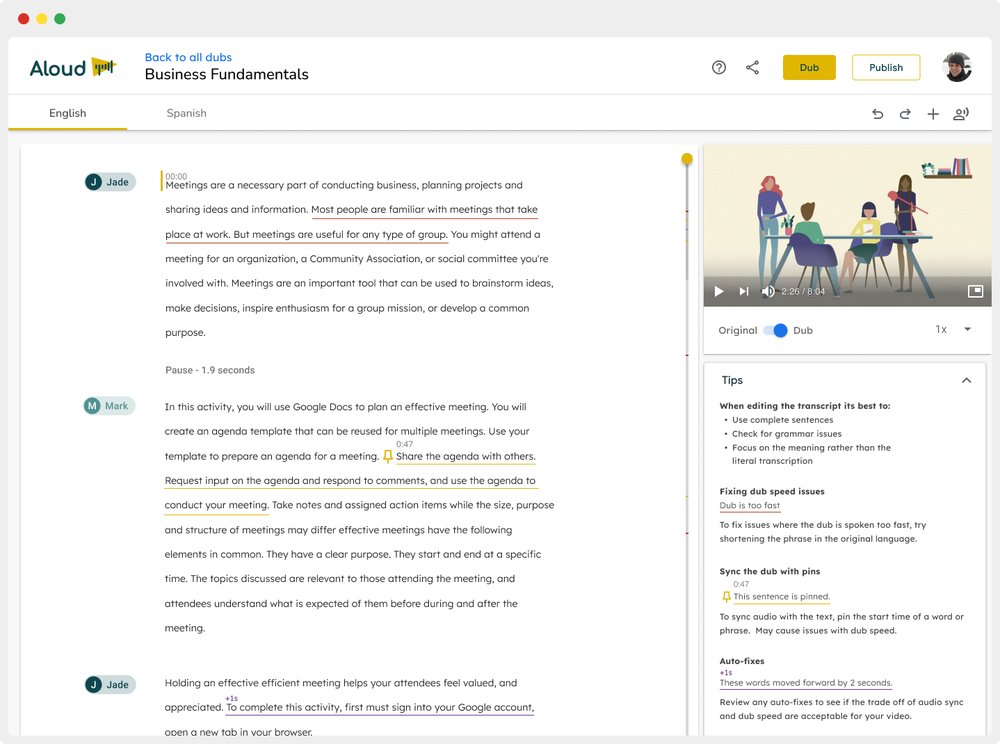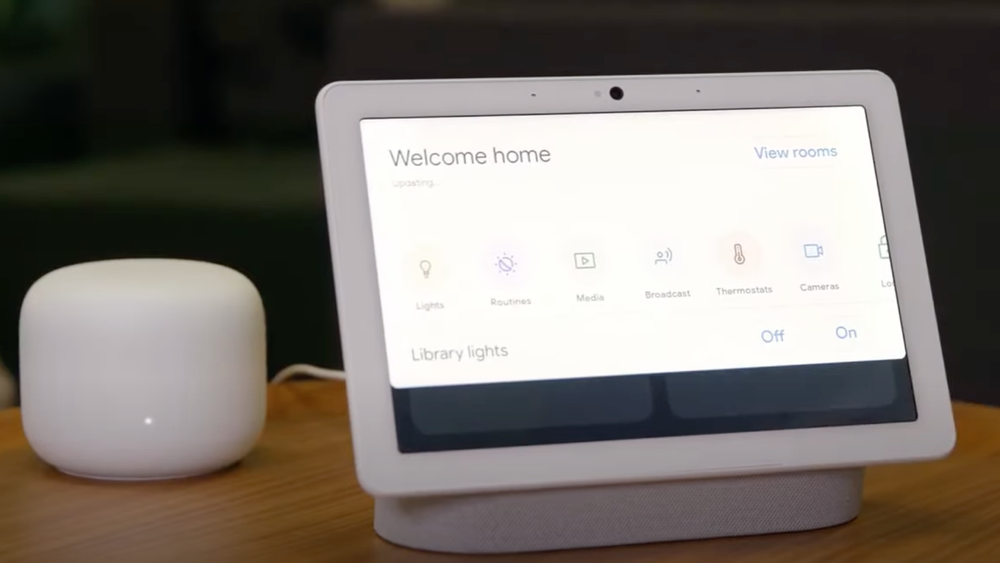Overcoming the language barrier in videos with Aloud
Have you ever wanted to learn something from a video, but couldn’t because it was in another language? If your answer is yes, you’re not alone.
That’s why we are introducing Aloud, a new product from Area 120, Google’s in-house incubator for experimental projects. Using Aloud, creators can quickly and easily dub their videos into multiple languages, unlocking knowledge that might be trapped in a single language today. We support dubbing into Spanish and Portuguese, with Hindi, Bahasa-Indonesian and other languages coming soon. We hope this makes dubbing more accessible to creators who previously considered it too difficult or too costly. And you can request early access starting today.
The language barrier
We grew up in Sri Lanka at a time before computing was mainstream, but had the opportunity to learn English at a young age. The ability to read and learn about new technologies in books only available in English opened our world and helped us develop a passion for technology. But English proficiency wasn't commonplace, and many of our friends had a much harder time. The language barrier was real for them, and the playing field was not level.
The methods of learning have changed since then, and research shows that 46% of global viewers use video to learn something new. But much of today’s video content is still being produced in English, and more than 80% of the world does not speak the language. For them, English videos are not accessible, and the playing field is still not level.
Subtitles can help bridge the language gap, but they’re not always ideal on mobile devices due to the small form factor, the necessity of constant attention to the screen, and accessibility challenges for those with visual or reading impairments. Dubbing, the process of adding a translated voice track, overcomes those limitations, but is time-consuming and cost-prohibitive for most creators.
With Aloud, dubbing can be as easy as typing in the language you speak

A preview of our text editor based (video editing-less) dubbing experience.
Dubbing used to take weeks worth of effort and a large budget. But with Aloud, you only need a few minutes. We use advances in audio separation, machine translation and speech synthesis to reduce time-consuming and costly steps like translation, video editing and audio production. You do not even need to know any language other than the ones you already speak, and all of this is available at no cost to the creator.
To dub with Aloud, all you need to do is provide the video and subtitles in the original language. If subtitles are not available, you can also quickly review the text transcript that we generate. With those inputs, Aloud can produce informative dubs like the one below:
Access a global audience, while staying in control
With dubbing, you can now reach previously unreachable portions of the world’s population. In our experiments, we have seen double-digit growth in views just by dubbing into one additional language.
We know you as a creator take pride in the content that you create, so we want to ensure that you remain in control. You decide which videos to dub, how to publish them, how much effort to put in and bring in language experts if you so choose. Aloud doesn’t create new content — it only uses the original speech and translates it into a different language of your choice. We're also working with YouTube to let creators add multiple audio tracks to their videos, a new feature that they started testing with a small group of creators late last year.
Viewers have transparency
Our goal is to open up previously inaccessible information to the world. At the same time, we’re vigilant about how the technology is used, and we want to make sure that synthetically dubbed content is never confused with the original, or with content that is dubbed by voice actors. So to ensure transparency, we require from our creators that all dubs produced by Aloud state clearly (in the video description, as a pinned comment or in the post credits screen) that they are synthetic dubs with a reference to the original.
Request early access today
We are starting this process with a focus on informational content, as we think it will help the most people. As we learn and improve on our tech, we plan to expand to other types of content as well.
Let's overcome the language barrier together – request early access at aloud.area120.google.com.
by Buddhika KottahachchiAloud via The Keyword

Comments
Post a Comment